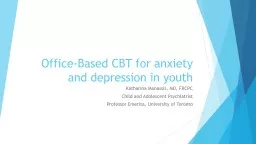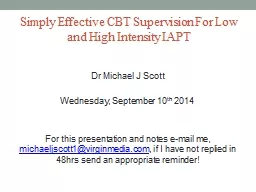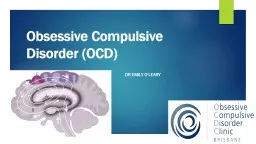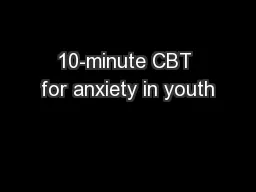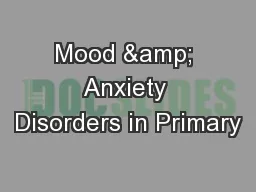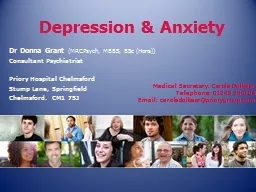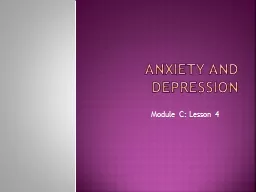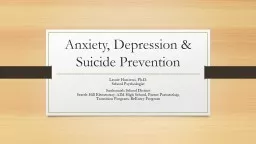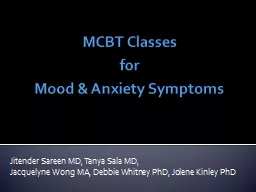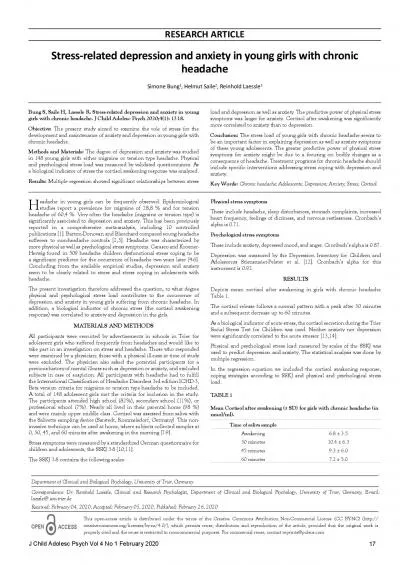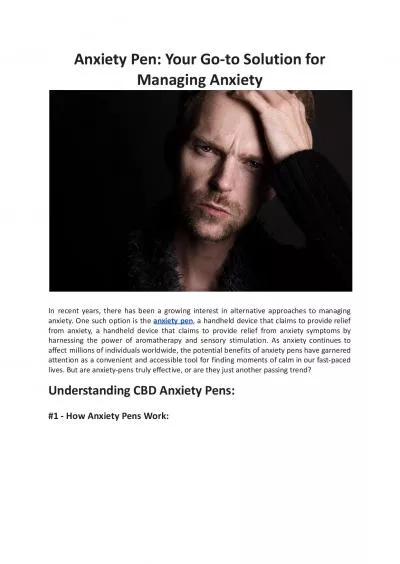PPT-Office-Based CBT for anxiety and depression in youth
Author : liane-varnes | Published Date : 2017-05-25
Katharina Manassis MD FRCPC Child and Adolescent Psychiatrist Professor Emerita University of Toronto Relationship with Commercial Interests Recent Research Support
Presentation Embed Code
Download Presentation
Download Presentation The PPT/PDF document "Office-Based CBT for anxiety and depress..." is the property of its rightful owner. Permission is granted to download and print the materials on this website for personal, non-commercial use only, and to display it on your personal computer provided you do not modify the materials and that you retain all copyright notices contained in the materials. By downloading content from our website, you accept the terms of this agreement.
Office-Based CBT for anxiety and depression in youth: Transcript
Download Rules Of Document
"Office-Based CBT for anxiety and depression in youth"The content belongs to its owner. You may download and print it for personal use, without modification, and keep all copyright notices. By downloading, you agree to these terms.
Related Documents

